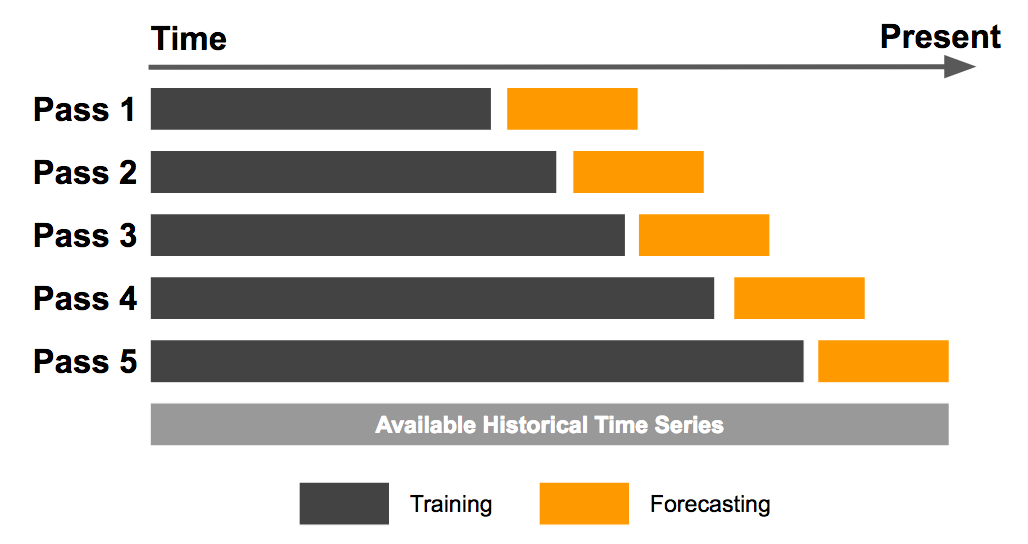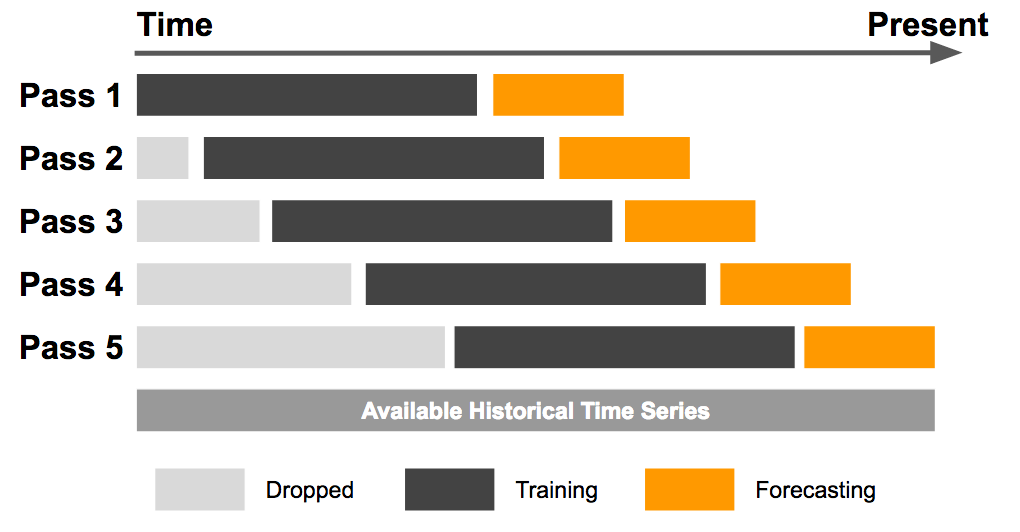GARCH rolling window forecast
GARCH Models in Python

Chelsea Yang
Data Science Instructor
Rolling window for out-of-sample forecast
An exciting part of financial modeling: predict the unknown

Rolling window forecast: repeatedly perform model fitting and forecast as time rolls forward

Expanding window forecast
Continuously add new data points to the sample

Motivations of rolling window forecast
- Avoid lookback bias
- Less subject to overfitting
- Adapt forecast to new observations
Implement expanding window forecast
Expanding window forecast:
for i in range(120):
gm_result = basic_gm.fit(first_obs = start_loc,
last_obs = i + end_loc, disp = 'off')
temp_result = gm_result.forecast(horizon = 1).variance
Fixed rolling window forecast
New data points are added while old ones are dropped from the sample

Implement fixed rolling window forecast
Fixed rolling window forecast:
for i in range(120):
# Specify rolling window range for model fitting
gm_result = basic_gm.fit(first_obs = i + start_loc,
last_obs = i + end_loc, disp = 'off')
temp_result = gm_result.forecast(horizon = 1).variance
How to determine window size
Usually determined on a case-by-case basis
Too wide window size: include obsolete data that may lead to higher variance
Too narrow window size: exclude relevant data that may lead to higher bias
The optimal window size: trade-off to balance bias and variance

Let's practice!
GARCH Models in Python

